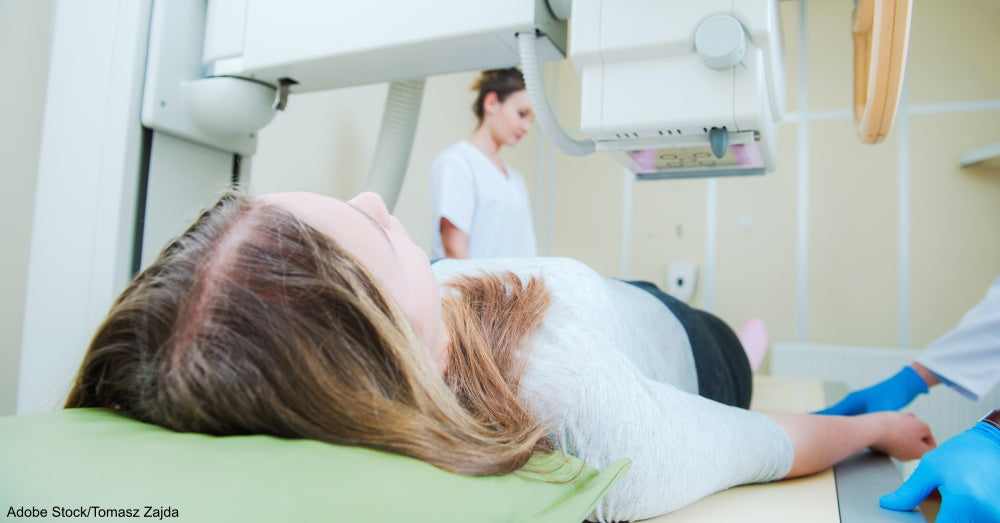10 Things Breast Cancer Patients Need to Know About Radiation Therapy
Elizabeth Morey
Most of us have a general idea of what radiation is and that it's used to treat various types of cancers. But how much do you really know about it?
Despite the fact that it's one of the core treatments used to combat breast cancer, it tends to be less talked about than chemotherapy and mastectomies. So let's talk about it.
The more you know about radiation, the better you'll be able to understand what you're in for when your doctor tells you about the treatment plan he or she is recommending for you. It will also help you make your own decision about whether or not radiation is right for you.
Below are ten things about radiation that you should know before you begin treatment.
10. What Radiation Is
Radiation therapy involves the use of high-energy rays concentrated into a thin beam to target the cancerous area. This method is generally used to kill any remaining cancer cells after a cancerous tumor has been removed via a lumpectomy or mastectomy.
9. How Radiation Works
Radiation therapy rays of energy are directed at the location of the cancer to avoid harming the rest of the body. The radiation damages the cells' DNA, which means it won't be able to reproduce, and the cancer will not be able to spread. Although radiation beams damage normal cells, they are generally more damaging to cancer cells because of how fast those cells divide. Cancer cells are also less organized than regular cells, disabling them from repairing the damage done by radiation as easily as normal cells can.
8. When Radiation is Appropriate
Radiation can be a useful treatment method for people at all stages of breast cancer from 0 to IV. In stages 0 to III, it is most often used after a lumpectomy or mastectomy. In stage IV, it is used to slow the spread of cancer, thereby lengthening the patient's life.
7. When Radiation Isn't Appropriate
Radiation is not safe for women who are pregnant and those who have a connective tissue disease. It also is not an option for patients who have already had a series of radiation treatments in the same area of the body. Some patients may simply opt out of radiation treatment in favor of another option if they are not able to commit to the schedule it requires.
6. The types of radiation
The three main types of radiation include external, internal, and intraoperative. External, the type described in the "What Radiation Is" section, is by far the most common type. However, other methods are being tested as well. Internal radiation is delivered directly into the breast tissue in the form of a tiny "seed," or piece of radioactive material that is injected using a special catheter. Intraoperative radiation uses an electron beam, similar to external radiation, but it is done during a surgical procedure, immediately after the removal of the cancerous tumor.
5. What to expect during treatment
Generally, the actual treatment itself will only take two to three minutes. You'll lie face-up under the machine during that time, and you will neither see nor feel the procedure happening. It is only afterward that you may experience some side effects.
4. Potential side effects of radiation
The most common side effects associated with radiation for breast cancer are sunburn-like skin irritation, skin discoloration, breast heaviness and fatigue. Be sure to alert your doctor to any side effects you are experiencing so that he or she can make any necessary changes or give you advice for dealing with these symptoms.
3. A typical radiation schedule
Radiation is often given several times a week for five or six weeks. Some patients, however, may undergo a higher dose of radiation treatment for a shorter span of roughly three to four weeks.
2. Myths about radiation
Some people are afraid to have radiation therapy because of myths they've heard about it. They may think radiation will be painful or cause them to be radioactive. Others believe that radiation therapy works much like chemotherapy and will induce nausea, vomiting, and hair loss. Still others think radiation could increase their risk of getting cancer again. None of these myths are true. Generally, radiation therapy is one of the easiest forms of breast cancer treatment for patients to go through.
1. How to make radiation fit into your life
Some patients choose not to have radiation because they cannot make it fit into their busy lives. However, if you do decide to undergo radiation, you need to make sure you go to every appointment for the full period of time your doctor has described in order to get the full effect. In order to be successful at this, stay in close contact with your doctor and hospital staff so they can work around your schedule as much as possible and take skin-care precautions in advance so that you will be less likely to need a break from treatment to allow your skin to heal. If you must miss an appointment, ask your doctor about adding it back on at the end of your treatment plan so you will not miss it completely.







